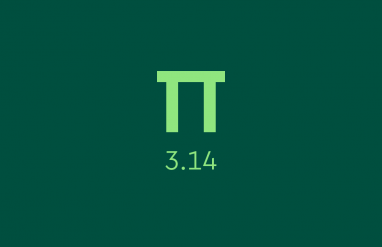Meteors, meteorites, meteoroids, asteroids, comets … that’s a lot of terms (and space objects) flying around! Not to mention shooting stars and meteor showers. Are they all the same thing? Even though some of them may appear pretty similar to us, the answer is no, they’re not the same thing—especially not to the scientists who study them and who use different terms for specific reasons (more on them later).
You’re about to get a crash course in the differences and similarities—some subtle, some meatier—between meteors, meteorites, and meteoroids. You’ll also learn how they compare or relate to asteroids and comets. And you’ll even get some tips for when to spot them in the sky!
⚡️Quick summary
- meteoroid: A “space rock”—a relatively small object traveling through space, between the size of a grain of dust and a small asteroid.
- meteor: A meteoroid that enters Earth’s atmosphere and burns up.
- meteorite: A meteoroid, especially one that has hit Earth’s surface.
- asteroid: A rocky object that orbits the sun and has an average size between a meteoroid and a planet.
- comet: An object made mostly of ice and dust, often with a gas halo and tail, that sometimes orbits the sun.
meteor vs. meteorite vs. meteoroid
A meteoroid is “a small, rocky or metallic body revolving in interplanetary space around the sun. A meteoroid is significantly smaller than an asteroid, ranging from small grains or particles to the size of large boulders.” In other words, a meteoroid is a “space rock” smaller than an asteroid.
In the context of these terms, the word meteor might sound like the most general, but that’s not actually the case. We’ve started with the word meteoroid because meteoroids can become meteors or meteorites.
A meteor is a “a meteoroid that has entered Earth’s atmosphere.” Basically, it’s a small body of rock or metal that used to travel around in space, but that got sucked into Earth’s gravity. The friction from the atmosphere makes it heat up and glow, sometimes making it visible as it streaks through the sky. What’s visible from Earth is a bright, fiery streak in the sky, and we also use the word meteor to refer to that streak (as opposed to the body itself). A particularly bright meteor can be called a bolide or a fireball, especially if it explodes.
A meteorite is “a mass of stone or metal that has reached Earth from space.” In other words, a meteorite is a meteoroid that enters Earth’s atmosphere but does not burn up entirely, instead surviving to crash into the surface. Meteorites tend to be bigger than the meteors that burn up before making it to the surface. This makes sense, because the bigger ones have more to get burned away on their way to the surface, while the smaller ones disintegrate into nothing. A meteorite might look like a fireball as it crashes toward Earth, but it eventually cools.
The -ite ending is often used in the names of rocks and minerals, such as anthracite. That’s a good way to remember that meteorites are the ones that make it to Earth’s surface as rocks.
Meteorite impacts can be pretty violent. Many meteorites have left huge depressions in Earth’s surface, called impact craters or meteorite craters. The large Chicxulub crater in Mexico is thought to be from the meteorite strike that caused the extinction of many dinosaurs. The biggest impact crater on Earth is the Vredefort crater in South Africa—it was originally 185 miles across.
In more casual use, meteorite is also sometimes used as a synonym for meteoroid—a rock traveling through space. Technically speaking, though, the space rocks that reach the ground are typically called meteorites.
What’s the difference between meteors, meteorites, and meteoroids?
Meteoroids, meteors, and meteorites are really names for space rocks at different stages. The ones floating around in space are meteoroids. The ones that enter Earth’s atmosphere and burn up are called meteors. The ones that don’t burn up entirely and instead crash into the surface of the earth are called meteorites.
Because meteors streak so brightly across the sky, the adjective meteoric is sometimes used metaphorically to describe something sudden, brilliant, and swift, especially in the phrase meteoric rise. Some people object to this phrase, because, by definition, meteors fall, not rise. The origin of the word meteor, though, might get a rise out of these nitpickers.
The word meteor, which has been used in English since at least the 1570s, ultimately comes from the Greek meteōron, meaning “a thing in the air.” This is derived from the root verb aeirein, meaning “to raise.” The other words derived from meteor are based on this same root.
Now that we know where the word meteor comes from, let’s find out where meteors come from.
Where do meteors come from?
Remember, meteors are meteoroids that enter Earth’s atmosphere. Many meteoroids are fragments from comets or asteroids (both of which we’ll discuss soon), especially from asteroids in the asteroid belt between Mars and Jupiter. (Jupiter’s strong gravity field pulls some objects out of the belt and sends them wandering through space, sometimes toward Earth.) Some meteoroids are fragments of planets or other celestial bodies—like Mars or the Moon—that broke off when an asteroid smashed into them.
What is the study of meteors called?
The study of meteors is called meteoritics, and a person who studies meteors is called a meteoriticist. The title of meteorologist was already taken by those who study weather and weather patterns. (This might seem strange, but it makes more sense when you realize that the word meteor was once used to refer to any atmospheric phenomenon—like hail or a hurricane.)
Meteorologists know the difference between weather and climate. Do you? Learn more about them here.
What is a meteor shower?
A meteor shower is what happens when a lot of meteors enter the atmosphere during a relatively short period of time. Many people enjoy meteor showers because they allow you to see many meteors at once. Sometimes, this happens because Earth has passed through what’s known as a meteor swarm—a large number of meteoroids moving in a parallel path. Some meteor showers occur when Earth passes through the path where a comet has traveled—the meteors in these showers are comet fragments that have fallen off and been pulled in by Earth’s gravity. Due to the regularity of the Earth’s orbit, some meteor showers happen at the same time every year (when Earth passes the paths of these comets). Some particularly well-known meteor showers include the Perseids (in mid-August), the Leonids (in mid-November), and the Eta Aquariids (in early May), which are linked to the famous Halley’s comet.
What is an asteroid?
An asteroid is “any of millions of small celestial objects revolving around the sun, often irregularly shaped and having a great range in size.” Asteroids can also be called minor planets or planetoids. Asteroids typically consist of rocks or metals. They’re bigger than meteoroids, but they can range from as small as six feet across to more than 600 miles across (much smaller than a planet, but still pretty big). In disaster movies, the big space rock that might destroy the entire planet is usually an asteroid. (Note to the people in charge in case this ever becomes a real-life scenario: it’s probably easier to train astronauts to use big drills than it is to train “a misfit team of deep-core drillers” to become astronauts. Just saying.)
Where do asteroids come from? Get this—they’re essentially space debris left over from when the solar system formed. The word asteroid comes from the Greek asteroeidḗs, meaning “starry” or “starlike” (to be clear, asteroids orbit stars, which makes them more like tiny planets).
There are currently more than 1 million known asteroids in the solar system. Most of the asteroids we know about are in the asteroid belt, a kind of junkyard for asteroids between Mars and Jupiter.
What is a comet?
A comet is “a celestial body moving about the sun, usually in a highly eccentric orbit, consisting of a central mass surrounded by an envelope of dust and gas that may form a tail that streams away from the sun.” Comets consist mostly of ice, dust, and some rocky bits—they are sometimes nicknamed “dirty snowballs” for this reason. This sets them apart from asteroids, which are mostly rock or metal. Like asteroids, though, comets often orbit the sun. When comets get close to the sun, it heats their icy core, forming a halo (or coma) of dust and gas. Comets are known for having a tail, which is really the trail that happens when this gaseous dust cloud is blown by solar wind or heat.
This tail kind of looks like the comet’s hair, and guess what—the word comet comes from the Greek komḗtēs, meaning “having long hair”!
Where do comets come from? Most comets come from outside of or from the edge of the solar system. Many come from the far-out regions known as the Oort Cloud (where there are billions of them) and the Kuiper Belt. Some orbit the sun, while others escape on a path out of the solar system.
Those that orbit the sun come around in regular intervals, which makes some of them famous visitors. Halley’s comet is known for reappearing about every 76 years (it was last here in 1986, and you can catch it again in 2061). Many comets have a much longer orbit period, but some are shorter—Encke’s comet comes around every 3.3 years (catch it in October 2023).
What is a shooting star?
The term shooting star (or falling star) is just a more poetic name for a meteor, which can look a little bit like a star as it makes a bright streak through the sky. Since they happen so fast, you have to be pretty lucky to see a shooting star as it happens—unless you know that a meteor shower is coming.
How to use meteor, meteorite, meteoroid, asteroid, and comet
Well done! You’ve made it this far without burning up in the science of space rocks. Let’s recap so you can be sure you’re always meteor-right when it comes to what word to use.
- Meteoroids are the somewhat small, rocky or metal-based objects flying around space, typically unseen except with sophisticated equipment. They are often fragments of asteroids or comets.
- Meteors are the meteoroids that enter Earth’s atmosphere, where they often burn up—meaning they can often be seen with the naked eye. This is what we sometimes call a shooting star. When there are a lot of them at once, we call it a meteor shower.
- Meteorites are the meteoroids that have made it all the way to Earth’s surface (though these two terms are sometimes used interchangeably).
- Asteroids are rocky objects that vary in size, but on average they’re between the size of a meteoroid and a planet. Asteroids are mostly found within the asteroid belt between Mars and Jupiter.
- Comets are made up of mostly ice and dust and are known for the tail of gas and dust that gets blown away from them when they’re near the sun. Some, like asteroids, orbit the sun and come around in regular intervals.
Examples of meteor, meteorite, meteoroid, asteroid, and comet used in a sentence
These terms are used in both technical and informal ways. We’ve covered the technical differences, but here are some examples of how the terms are commonly used in sentences.
- I saw a meteor flash through the sky when I was stargazing last night.
- The meteorite left an impact crater 40 miles wide.
- Scientists are using a space telescope to track the meteoroid as it passes near the planet.
- An asteroid hitting Earth would be a cataclysmic event.
- If you look closely, you can see the comet’s tail streaming behind it.
- Scientists believe the meteorite discovered in the desert is a fragment of an asteroid formed in the early days of the solar system.














